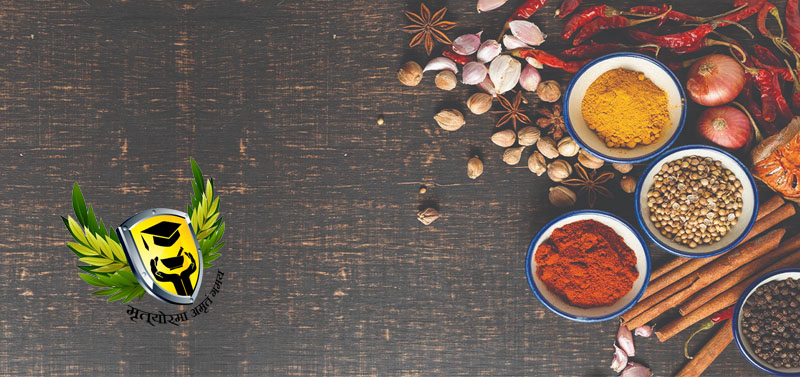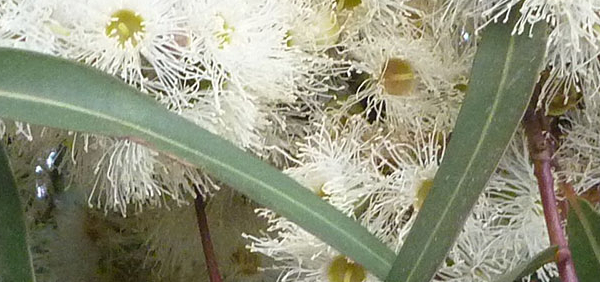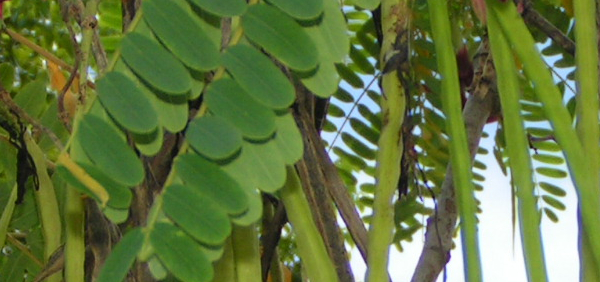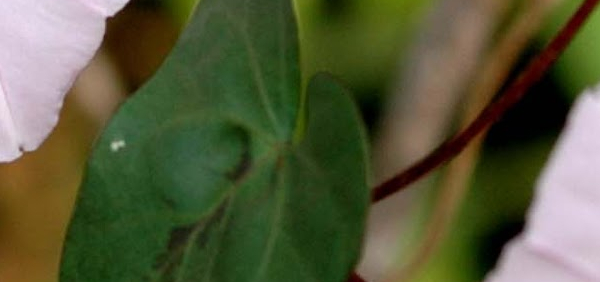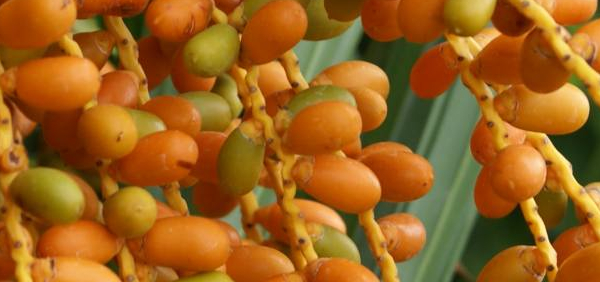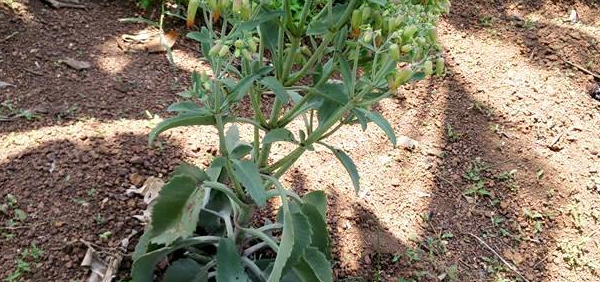biyana :

Mitragyna parvifolia (Roxb.) Korth belonging to family Rubiaceae is commonly known as Kaim. The plant grows throughout India, in deciduous and evergreen forests. The chemical constituents of the plant are pyroligneous acid, methyl acetate, ketones and aldehydes. The plant is credited with innumerable medicinal properties and is widely used by tribal people and other ayurvedic practitioners.
Taxonomical Classification
Kingdom: Plantae - Plants
Division: Magnoliophyta - Flowering plants
Class: Magnoliopsida - Dicotyledons
Family: Rubiaceae
Genus: Mitragyna
Species: Mitragyna parvifolia
VERNACULAR NAMES
Sanskrit: Vitanah.
English: kaim , True Kadamb
Hindi: Guri, Kaim, Kadamb, Kayim, Kaaylum.
Telugu: Nerkadamba.
Bengali: Gulikadam, Dharakadam
Marathi: Kalam.
Gujarathi: Kalam
Tamil: Nirkatampu, Katampai.
Malayalam: Sirakadambu, Kadamamaram, പൂച്ചക്കടമ്പ് Puuccakkatamp, Veembu, നീര്ക്കടമ്പ് Niirkkatamp, Neerkadambu, Kadambu, Kadamba, Rose Kadambu, കതമമരം Kathamamaram, വീമ്പ് Viimp, Sirikadamba, റോസ് കടമ്പ് Roos Katamp, Poochakadambu, Vimba
Kannada: Nayekadambe, Nira kadamba, Kongu, Sanna kadamba.
Nepal: कैम Kaim, फाल्दु Phaaldu, सानो हलेदो Saano Haledo, टिकुल Tikul
Synonyms
Synonyms in Ayurveda:
Rasa:
Kashaya Tikta
Guna:
Laghu Ruksha
Veerya:
Ushna
Vipaka:
Katu
Karma:
Pittahara
The bark and roots are used to treat fever, colic, muscular pain, burning sensation, poisoning, gynecological disorders, cough, edema and as aphrodisiac. The fruit juice augments the quantities of breast milk in lactating mothers and also work as lactodepurant. Wounds and ulcers are dressed with its leaves to alleviate pain, swelling and for better healing. After extensive literature survey it has been found that, though the plant has great potential for anthelmintic activity,
Cultivation:
A plant of the tropics, where it is found at elevations up to 1,300 metres. It grows best in areas where annual daytime temperatures are within the range 20 - 35°c, but can tolerate 5 - 47°c
When dormant, the plant can survive temperatures down to about -5°c, but young growth can be severely damaged at -1°c
. It prefers a mean annual rainfall in the range 1,500 - 2,500mm, but tolerates 900 - 3,300mm
Young trees withstand shade, whilst older trees are light demanding Succeeds in wide range of fertile soils
Prefers a pH in the range 5.5 - 6.5, tolerating 4.5 - 7.5
The tree reproduces very sparingly in the wild, but better where the soil has been broken up so that the small seeds can reach the ground without difficulty
The flowers are very fragrant
Propogation:
Seed. The plant is difficult to propagate in the nurseryHarvesting:
Flowering - May - JuneFruiting: June - July
Collecion Period - May to june
Phytochemistry:
- Stem and bark yield alkaloids, flavonoids, glycosides, and tannins.
- An alcohol extract of bark yielded carbohydrates, alkaloids, phenols, tannins and phytosterols. A benzene extract yielded carbohydrates, flavonoids, and sterols.
- Leaves yield six major oxindolic alkaloids viz. mitraphylline, isomitraphylline, pteropodine, isopteropodine, speciophylline, and uncarine F. Other plant alkaloids are rotundifoline, rhynchophylline, isorotundifoline, rhynchociline, speciocilitine, speciofoline, mitragynine. Plant also yield compounds like pyroligneous acids, aldehydes, ketones, scopoletin, thermophylline, daucosterol, quinovic acid, ß-sitosterol and methyl acetate.
- Leaves yielded four hetero-yohimbine type oxindole alkaloids from an acid base treated chloroform fraction of ethanolic extract of leaves: 17-dihydro-17b-hydroxy isomitraphylline , 17- dihydro-17b-hydroxy mitraphylline , together with two known alkaloids, isomitraphylline and mitraphylline . Mitraphylline was the main alkaloid
Parts used for medicinal purpose
Bark,
Fruit,
Leaves,
Root,
,
Dosage:
Root , Bark, leaves - 3-6 g
Morphology:
Habit
Deciduous trees, up to 20 m tall.
Trunk�ark
Bark grey, smooth and thin irregularly scaly when mature.
Branchlets
Young branchlets angular to subterete, glabrous.
Leaves
Leaves simple, opposite, decussate; stipules foliacous with keeled back, interpetiolar, caducous and leaving scar; petioles 1-4 cm long, canaliculate in cross section, glabrous; lamina 16 x 10 cm, ovate, elliptic-obovate to orbiculate, apex abruptly acuminate with blunt tip, rarely acute, base acute to attenuate to subcordate, margin entire, coriaceous, glabrous; midrib flat above; secondary nerves 6-10 pairs, hairy domatia present at axils; tertiary nerves distantly obliquely retiuculo-percurrent.
Flowers
Inflorescence terminal head; flowers sessile, cream-white; calyx lobes short.
Fruit& seed
Capsules, arranged in globose heads, each with 2-folicular cocci; seeds many, winged.
Geographical distribution:
- Tree was spotted in Butuan.
- Native to India.
- Found in tropical and subtropical regions of Asia and Africa.
General Use:
In Ayurvedic medicine the bark of the tree is used for blood-related diseases. In traditional medicine in the Indian subcontinent the bark and roots of the tree are used for fevers, colic, muscular pains, burning sensations in the stomach, poisoning, female problems, coughs, oedema and as an aphrodisiac.
Therapeutic Uses:
In Ayurvedic medicine the bark of the tree is used for blood-related diseases. In traditional medicine in the Indian subcontinent the bark and roots of the tree are used for fevers, colic, muscular pains, burning sensations in the stomach, poisoning, female problems, coughs, oedema and as an .
Wounds and ulcers may be dressed with bruised leaves to promote healing and to alleviate pain, while extracts of the fruit are used to kill pain and as anti-inflammatory agents. While these properties have been confirmed by scientist, they have not yet discovered which of the substances or combination of them are responsible for these actions.
The stem and the bark of the tree contain flavonoids, glycosides and tannins as well as a number of alkaloids, and an extract has been shown in vitro, to be effective in killing worms. Like St. John’s wort and ginseng, extracts have been proved to relieve anxiety and seem to work as well as diazepam, without the side effects of that drug.
Systemic Use:
The bark and roots are used in the treatment of fevers and colic
Pharmacological:
- Studies have shown analgesic, antipyretic, anti-inflammatory, antimicrobial, antiarthritic, antinociceptive, anticonvulsant, antidiabetic, anxiolytic, antiviral, immunosuppressive, antiurolithiatic properties.
- In Ayurveda, used as antipyretic, anti-arthritis, anticonvulsant, anthelmintic, antimicrobial, antiproliferative, antioxidant.
Clinical trials:
- PHARMACOGNOSTIC STUDIES ON THE TRUNK BARK OF MITRAGYNA PARVIFOLIA (ROXB.) KORTH. (RUBIACEAE) / A. Subramanian, V.R.Mohan*, C. Kalidass, A. Maruthupandian / Journal of Herbal Medicine and Toxicology 3 (2) 91-97 (2009).
- Heteroyohimbinoid type oxindole alkaloids from Mitragyna parvifolia / Richa Pandey, Subhash C. Singh, Madan M. Gupta * / Phytochemistry 67 (2006) 2164–2169
- In vitro investigation of anthelmintic activity of Mitragyna parvifolia (Roxb.) Korth. (Rubiaceae) / Badgujar Vishal B.* and Surana Sanjay J / Veterinary World Vol.3(7): 326-328
Research:
- Antimicrobial activity of Mitragyna parvifolia barks and Butea monosperma leaves extracts against human pathogenic microbial strains / Pundir Ram Kumar * and Bishnoi Shreya / International Journal of Drug Development & Research | October-December 2011, Vol. 3, Issue 4
- EFFECT OF MITRAGYNA PARVIFOLIA ON OXIDATIVE STRESS MARKER IN A STREPTOZOTOCIN INDUCED DIABETES / Ashutosh Shukla*, B P Srinivasan / Inventi Impact: Ethnopharmacology , Vol. 2012
- 17-Dihydro-17b-hydroxy isomitraphylline alkaloid as an inhibitor of DPP-IV, and its effect on incretin hormone and β-cell proliferation in diabetic rat. / Shukla A, Srinivasan BP. / Eur J Pharm Sci. 2012 Sep 29;47(2):512-9. / doi: 10.1016/j.ejps.2012.07.012. Epub 2012 Jul 20.
- Immunosuppressive and Cytotoxic Potential of Flavonoids from Mitragyna parvifolia, Mangifera indica and Aegle marmelos / Amit Gupta* and Sushama R Chaphalkar / Research & Reviews: Journal of Pharmacology and Toxicological Studies
Toxicity studies:
The plant was found to be practically non toxic
Use in other system of medicine:
Folkloric
- No reported folkloric medicinal use in the Philippines.
- In Ayurveda, bark used for blood-related diseases.
- In traditional Indian medicine, bark and roots used for fevers colic, muscular pains, stomach burning, poisoning, gynecological problems, cough and edema. Also used as aphrodisiac. Bruised leaves used to promote healing of wounds and ulcers and to alleviate pain.
- In some parts of India, rice is treated with various tree and seed extracts. Bark and roots used for fever colic, gynecologic problems. Fruit juice used to enhance breast milk secretion in lactating mothers.
- In Andhra Pradesh, fresh leaf juice used to treat jaundice. In Karnataka, India, stem bark used for biliousness. Bark paste applied externally for muscular pains. Bark decoction used for fevers. Powdered bark boiled with fruits and inhaled through the mouth for toothache.
- Sap used by various Indian tribes for treatment of jaundice.
Others
- Timber: Used for making furniture, agricultural implements, cooperages, paper industry, etc.
- Yellow Gold: In some countries, marked as a
CONCLUSION:
The Kadamb tree is native to the northern regions of the Indian subcontinent. It is often confused with the Cadamba tree or Neolamarckia cadamba or Anthocephalus cadamba or indicus, which are both associated with Krishna, and mentioned in the Bhagavata Purana.
This tree, Mitragyna parvifolia has been researched recently because in traditional folk medicine it is reputed to cure many diseases. It is a deciduous tree so loses its leaves in autumn, and tends to grow in forests. It can grow to a height of 25 metres, and has yellow-green flowers which grow into oblong fruits which contain seeds. The parts used in medicine are the root bark and leaves, although sometimes the fruits are used.
KEY WORDS: Mitragyna Parvifolia, Rubiaceae, Anthelmintic activity.



 Mitragyna parvifolia (Roxb.) Korth belonging to family Rubiaceae is commonly known as Kaim. The plant grows throughout India, in deciduous and evergreen forests. The chemical constituents of the plant are pyroligneous acid, methyl acetate, ketones and aldehydes. The plant is credited with innumerable medicinal properties and is widely used by tribal people and other ayurvedic practitioners.
Mitragyna parvifolia (Roxb.) Korth belonging to family Rubiaceae is commonly known as Kaim. The plant grows throughout India, in deciduous and evergreen forests. The chemical constituents of the plant are pyroligneous acid, methyl acetate, ketones and aldehydes. The plant is credited with innumerable medicinal properties and is widely used by tribal people and other ayurvedic practitioners. 

